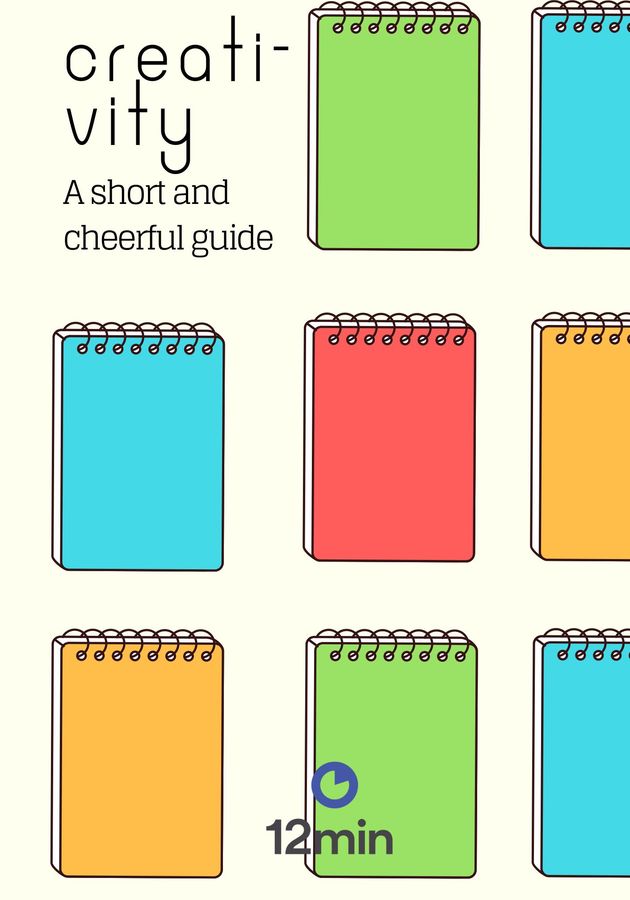What is your desire? From moment to moment, the answer may change. In the long term, you may desire to find a more personally fulfilling job, while in the short term, you may simply want a refreshing drink to sate your thirst. While the latter example is easy enough to resolve, the preceding one may require more effort on your part. Indeed, manifesting your desires may take additional support beyond your current capabilities.
If you’ve found yourself at this crossroads, Ask and It Is Given: Learning to Manifest Your Desires may be the precise book you need. Written by Esther and Jerry Hicks with the guidance of a “non-physical” entity known as Abraham, this book digs into the types of actions and mentalities a fully capable individual must possess in order to manifest their desires readily.
Ask and It Is Given may not be a light read, but it is certainly impactful. If the “laws of the universe” described throughout this book resonate with you, you may even find yourself reading it cover-to-cover several times over. Regardless of how deeply you connect with this text, you can be certain that your outlook on the world will never be the same after you finish the last page.
Things that we know
When you first pick up “Ask and It Is Given,” you may be a little befuddled by the progression of its subject matter over the course of the book. The unusual organization of information can lead to some feelings of repetition. To simplify your understanding of this work in this context, though, its chapters have been broken down based upon the title of the book’s first part.
Accordingly, the book opens with a review of information that is “known,” primarily by the authors and their metaphysical guide known as Abraham. While the separation between the authors and this figure isn’t fully articulated, what is clear is that Abraham claims to be “from the Non-Physical dimension,” a place from which you are also said to originate. Abraham is further described as a collection of like-minded beings that collectively hold insights into “the power of feeling good now” and how it can be harnessed by people in our physical dimension.
Of course, Abraham does not immediately launch into the methods needed to reach this level of personal fulfillment. First, this authorial being seems to need to set the scene so you can fully appreciate what they intend to impart in its entirety. Abraham accomplishes this in several ways, including providing the reader with “reminders” about where they originated from in the “Source.” Abraham also provides assurances to the reader as they begin their mental reawakening, with memorable axioms such as “there is nothing that you cannot be, do, or have.”
Further on, Abraham begins to open up and answer the questions posed by previous physical beings they have interacted with. For example, Abraham declares that neither a lack of skill nor fortitude has kept physical beings from reaching their desires. Instead, metaphysical forces relating to mismatched “vibrations” of a being and their desires have left them in a discordant state. This is not a reason for you to despair, he believes, because, in his own words, “Well-Being is lined up outside your door” even now.
The book goes into more detail about the nature of these metaphysical “vibrations” in Chapters 5 and 8. Therein, Abraham asserts that the physical senses are all a form of vibrational interpretation. The same goes for emotions, as it turns out, with your internal emotional vibration interpreters serving as your most sophisticated means of approaching the abilities of metaphysical beings like Abraham. It also goes into greater detail on the role of emotions in vibrational interpretation.
Chapter 6 introduces one of the major overarching concepts communicated in this book, that is, the so-called “Law of Attraction.” This “universal manager” ensures that like-minded beings (that is, those that vibrate with matching intensities) are drawn together. It is through this law that beings that achieve “vibrational harmony” are able to make manifest the desires of one another. By the opposite virtue, though, you are liable to attract undesirable results if your vibrations continuously match those of undesirable outcomes.
Starting around Chapter 7, you begin to pick up a fresh air of encouragement from Abraham. For example, beings like Abraham refer to the location of physical beings as “Leading Edge of Thought,” which describes how close this state of being is to its culminating result. As such, Abraham asserts that it is necessary to open the floodgates of one’s mind to begin to ask the questions that only they, as fully aware metaphysical beings deriving from the Source, can provide.
All of this preface-like material sets up for what you’ll find in Chapter 10, which is one of the first actionable “truths” expounded by Abraham. This is the “Creative Process,” which entails the following three parts:
- Step 1 - You ask.
- Step 2 - The answer is given (by the Universe).
- Step 3 - The answer, which has been given, must be received or allowed.
Abraham asserts that this process takes time and practice to execute properly, especially when it comes to providing the full attention necessary to reliably accomplish step 3. But if this process is used reliably, Abraham asserts that anyone can become a “Deliberate Creator” who can guide their own thoughts without being controlled by them.
You’ll find one of the ways you can qualify your success in this process in Chapter 12, which discusses “Emotional Set-points.” When these set-points are met, they provide a perspective that can, in turn, allow beings to manipulate their own perspectives in life more efficiently. Moods can act as one trigger for an emotional set-point, as they demonstrate clearly how perspective can change from moment to moment without precise cause. This realization, Abraham believes, can help you bounce back and reframe those issues that were previously inhibiting your desires.
Finally, Chapter 13 provides you with a medium to ask the kind of questions required by the Creative Process to facilitate the revealing of emotional set-points. This medium, your feelings, can act as a guide to determine your current state of desire fulfillment. Abraham asserts that the mantra, “follow your bliss” effectively encapsulates both the mechanic and the goal associated with this process because, “in the steady reaching for bliss, you must surely align with the Energy of your Source.”
Things that you may have forgotten
Around halfway through the book, Abraham’s tone begins to change in order to emphasize several topics that the reader – who has previously been described as an “eternal being” – may have forgotten during their time in a physical form. To put it briefly, Abraham tells readers that they knew the entire Creative Process and the joy that it can produce before willingly entering a physical form. Abraham then loops back to some of the information expounded in the first half of the book and applies it in the service of answering common questions emerging from hypothetical readers’ reawakening to their true nature.
Chapter 15 serves as a kind of “creed” for adherents of the mindset set forth by Abraham. Very concisely, this chapter clarifies the nature of the universe, the manner in which it is expanding, and the role the individual reader plays in its larger progression. In the context of this book’s progression, it is clear that this brief chapter is designed to act as a concise communication tool through which adherents may expound their beliefs to others.
Things that are important to remember
With all of the information provided up to this point, you are likely beginning to wonder how you can act upon this book’s core tenets. Starting around Chapter 17, Abraham begins to lay out some of the things that are important to remember when taking this leap forward. This includes a persistent need to reappraise “where you want to be” in a larger sense, with an analogy of travel between Phoenix, Arizona, and San Diego, California, from a previous chapter serving as an illustration.
To follow this up, Chapter 18 puts a major tool in your toolbox by proclaiming that you can change your vibrational frequency in order to get where you want to be. This change must be gradual, though, or else you will not be able to sustain your new resonance long enough to allow the Law of Attraction to pull you towards your desired outcome. Abraham asserts that the best way to utilize this tool is by reaching for the best available feeling and then, using the creative process, allowing it to guide you towards your larger bliss.
Up to this point, Abraham discusses what otherwise feels like a limitless, self-controlled means of achieving joy. But as he explains in Chapter 20, hindering the freedom of another being always comes at a cost. To be specific, such a negative action causes you to lose your way towards your desire because you are distracted by the desires of another. But all the same, Abraham asserts that the self-control described earlier on can keep you on the right path, so long as you accept that self-control as a kind of tireless guide.
Finally, in Chapters 21 and 22, Abraham provides a kind of meditation that readers can use to begin to tap into the fullness of their capabilities. To successfully complete this meditation, you must be able to focus solely and entirely on a desire for 17 seconds. However, if you are able to do this for 68 seconds (with practice), then the resonant frequency of that desire will begin to clarify slightly, allowing you to use it as a waypoint going forward.
A process for achievement
Almost the entire second half of this book is devoted to providing practices that readers can use to improve their point of attraction. These processes are designed to accommodate several different mood-based set-points, and often enhance them through observational guidance. This can be seen in process #1, the “Rampage of Appreciation,” which requires you to use a kind of free-associative thought to better highlight the many good and wholesome things currently occurring in your immediate experience.
Other processes in this collection are more focused on illuminating the unconscious mind, as seen in process #7, “The Dream.” This process can be initiated after a dream ends and calls on the participant to break down the events of the dream as well as their emotional impact. This information, in turn, can be used to evaluate how efficiently you are vibrating towards your desires based upon how clearly they are represented in your dreams.
Final Notes
Even in a summarized format, the emotional and psychological impact of Ask and It Is Given feels immense. Not only does its narration by Abraham through Esther Hicks feel wise beyond measure, but it also provides a great deal of clarity that can help even the most downtrodden individual reorient their life’s course. By the same virtue, there is something transcendental about Abraham’s assertion that the reader (and indeed, all beings) derive from a metaphysical source beyond our mortal comprehension.
If you doubted it before, then you should now understand that “Ask and It Is Given” is no mere self-help book. This book has remained on the minds of readers from coast to coast since 2004 for good reason – it is like nothing any mortal or religious entity has previously put forth. To say that Ask and It Is Given may be life-changing for you is clichéd, but the sentiment of seminal change waiting just around the corner still rings true once you’ve fully digested this book’s unforgettable message.
12min Tip
If you aspire to understand more about how to improve your well-being, perhaps having a glance at “The Power of Now” is the way to go.





























